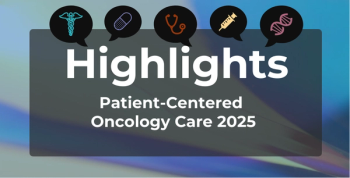
Community Health Centers Expand Lp(a) Screening to Reduce Cardiovascular Risk
Key Takeaways
- Elevated Lp(a) is a significant, often overlooked genetic risk factor for cardiovascular disease, affecting 1 in 5 Americans.
- The AHA's Lp(a) Community Health Centers Discovery Project aims to expand Lp(a) testing and awareness in community health centers.
A new American Heart Association initiative is working to increase screening for lipoprotein(a) (Lp[a]) at community health centers nationwide to help address undetected cardiovascular risk.
Screening for elevated lipoprotein(a) (Lp[a])—an inherited risk factor for
Although elevated Lp(a) is estimated to
In response, the AHA has launched the Lp(a) Community Health Centers Discovery Project, supported by Novartis Pharmaceuticals. According to a
“A simple, one-time Lp(a) test can give lifelong insight about overall heart disease risk—especially for people with a family history or who are otherwise at increased risk,” said Kaavya Paruchuri, MD, clinical operations director of cardiovascular medicine and director of the Lipid Apheresis Unit at Massachusetts General Hospital. “Community health centers are vital for making this important tool available to more people and helping individuals take control of their heart health.”
Implementing New Screening Protocols
Since the project began in 2024, 10 community health centers across the US have implemented new screening protocols, resulting in increased testing rates at participating sites; another 10 are expected to join the initiative in 2025. Current participating sites include:
- Westside Family Health Center (Culver City, California)
- Bay Area Community Health (Fremont, California)
- Lone Star Family Health Center (Conroe, Texas)
- Bee Busy Wellness Center (Houston, Texas)
- Spring Branch Community Health Center (Houston, Texas)
- Capital Area Health Network (Richmond, Virginia)
- El Centro Family Health (Española, New Mexico)
- Heart of Ohio Family Health Centers (Columbus, Ohio)
- Southwest Community Health Center (Bridgeport, Connecticut)
- The Chautauqua Center (Dunkirk, New York)
These efforts build on the AHA’s 2023
Although treatment options for elevated Lp(a) remain limited, identifying high levels can guide personalized risk reduction strategies—such as intensified management of blood pressure, low-density lipoprotein cholesterol, and lifestyle-related factors. Studies have shown that elevated Lp(a) is linked to
The initiative is encouraging community health centers to join the effort by completing an application by August 15, 2025. Clinicians can also access educational resources, including a guide to frequently asked questions about Lp(a) testing.
References
- Screening for cardiovascular disease marker in community health centers may reduce risk. News release. American Heart Association. July 23, 2025. Accessed August 6, 2025.
https://newsroom.heart.org/news/screening-for-cardiovascular-disease-marker-in-community-health-centers-may-reduce-risk - Shah NP, Mulder H, Lydon E, et al. Lipoprotein (a) testing in patients with atherosclerotic cardiovascular disease in 5 large US health systems. J Am Heart Assoc. 2024;13(21):e035610. doi:10.1161/JAHA.124.035610
- New research project aims to set standardized approach to lipoprotein(a) management. News release. American Heart Association. March 24, 2023. Accessed August 6, 2025.
https://newsroom.heart.org/news/new-research-project-aims-to-set-standardized-approach-to-lipoprotein-a-management - Wilson DP, Jacobson TA, Jones PH, et al. Use of Lipoprotein(a) in clinical practice: A biomarker whose time has come. A scientific statement from the National Lipid Association. J Clin Lipidol. 2019;13(3):374-392. doi:10.1016/j.jacl.2019.04.010
Newsletter
Stay ahead of policy, cost, and value—subscribe to AJMC for expert insights at the intersection of clinical care and health economics.







































